Peace Lily Plant Care: They Will Do Best Sheltered From Extreme Temperature Swings

HOUSEPLANTS > SPATHIPHYLLUM

Elizabeth is a Permaculture Garden Designer, Sustainability Consultant and Professional Writer, working as an advocate for positive change. She graduated from the University of St. Andrews with an MA in English and Philosophy and obtained a Diploma in Applied Permaculture Design from the Permaculture Association.
Reviewed By DAN ORI

Dan has over 27 years’ under his belt caring for plants and gardens. Working as a Horticultural Instructor and Consultant, he draws on a diverse range of experience that includes working as a Head Gardener, Tree Surgeon, Garden Centre Trouble Shooter, and writer of academic papers. Dan has a Level 3 Diploma in Horticulture and is currently a candidate for the RHS’s most prestigious award – The Master of Horticulture.
SPATHIPHYLLUM GUIDES
Peace Lily plants are one of the most popular houseplants to grow in the UK and make a great choice for a suitable spot inside your home.
Peace lilies are easy plants to care for and will not take up too much of your time or attention.
Overview
| Botanical Name | Spathiphyllum wallisii |
| Common Name(s) | Peace Lily |
| Plant Type | Houseplant |
| Native Area | Columbia |
| Hardiness Rating | H1B |
| Foliage | Evergreen |
| Flowers | Tiny white flowers in a white spathe |
| When To Plant | Any time indoors |
Sunlight
Preferred
Partial Shade
Exposure
Sheltered
Size
Height
0.5 – 1M
Spread
0.1 – 0.5M
Bloom Time
Spring / Summer
Soil
Preferred
Chalk, loam or sand
Moisture
Moist but well-drained
pH
Any
The peace lily, Spathiphyllum wallisii, is a herbaceous perennial and tropical evergreen in the Araceae plant family.
It was discovered in the late 19th Century growing wild in Colombia and has since been hybridised and has become a very popular houseplant, with a number of interesting cultivars which are commonly grown as indoor plants in the UK and other temperate climes.1June 2015: the Peace Lily is Houseplant of the month. (2015, July 3). Flower Council. Retrieved March 24, 2023, from https://www.flowercouncil.co.uk/campaign/june-2015-the-peace-lily-is-houseplant-of-the-month
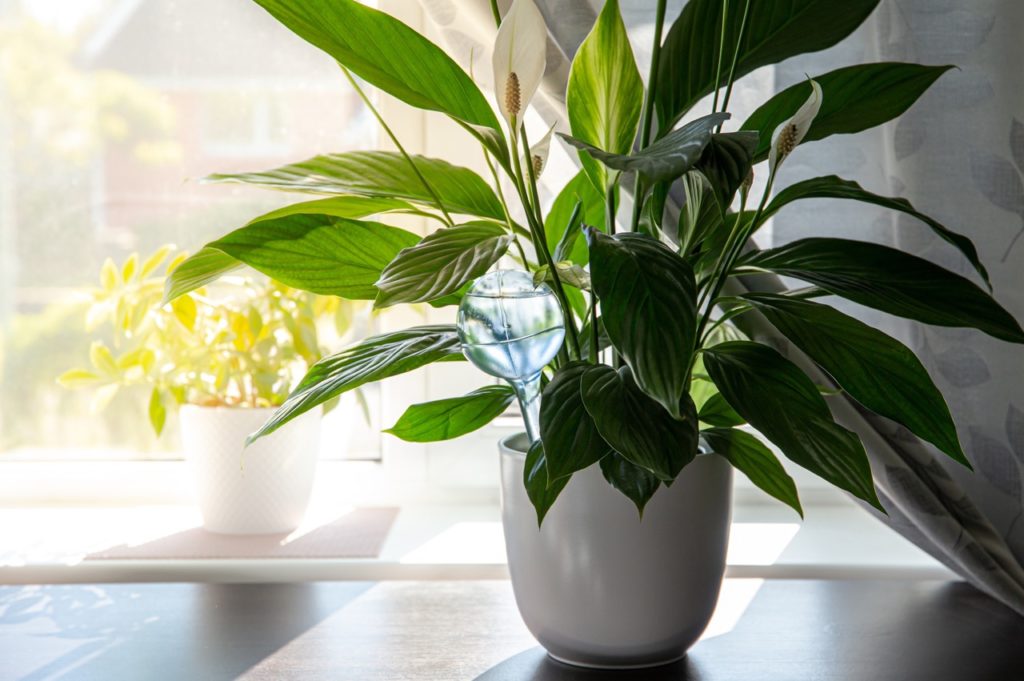
It is in the same family as Zantedeschia, and to less obviously related houseplants like Monstera and Dieffenbachia.
Common Varieties
As well as buying species peace lilies, it is also possible to find a range of hybrid cultivars.
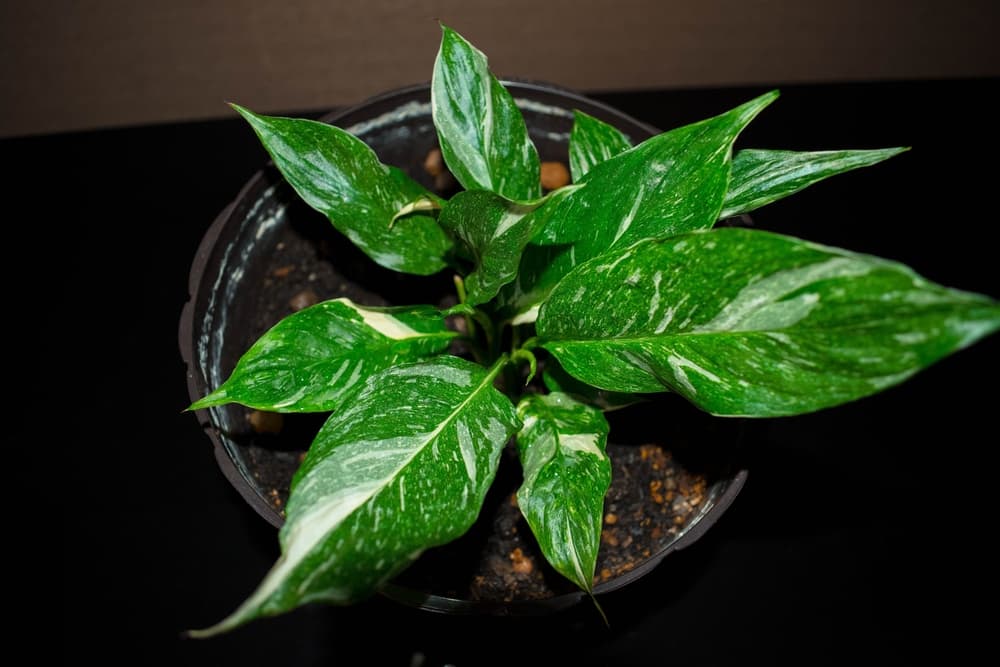
Some common options to consider include:
- S. ‘Domino’
- S. ‘Jetty’
- S. ‘Little Angel’
- S. ‘Mauna Loa’
- S. ‘Patricia’
- S. ‘Picasso’
- S. ‘Piccolino’
- S. ‘Sensation’
- S. ‘Sonia’
- S. ‘White Stripe’
Where To Grow
Peace lilies will be perfect for growing indoors in a light and bright spot, but one which is out of direct sunlight.
A reasonably bright bathroom or another humid spot can be ideal since these are plants which will thrive in a warm and humid environment.
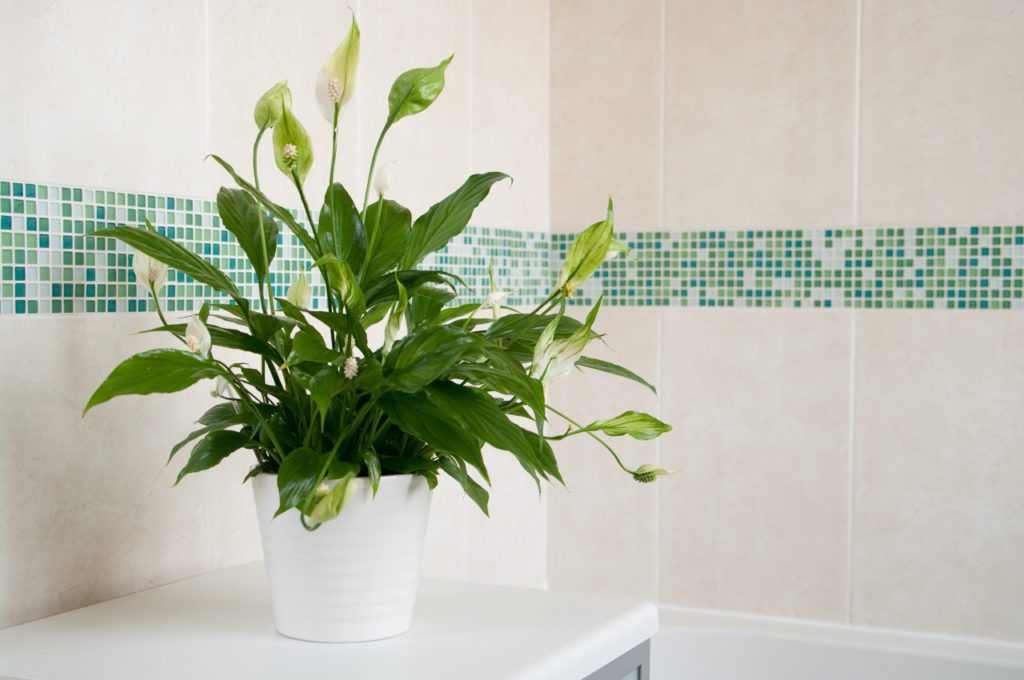
Peace lilies will do best if they are sheltered from any chilly draughts, and are kept away from heat sources such as radiators or stoves which can cause excessive temperature swings.
Aim to provide temperatures that consistently remain between around 18-25°C.
How To Plant
Peace lilies, once purchased, should be repotted into their long-term container.
It is important to choose a pot which is no more than a third larger than the root ball.
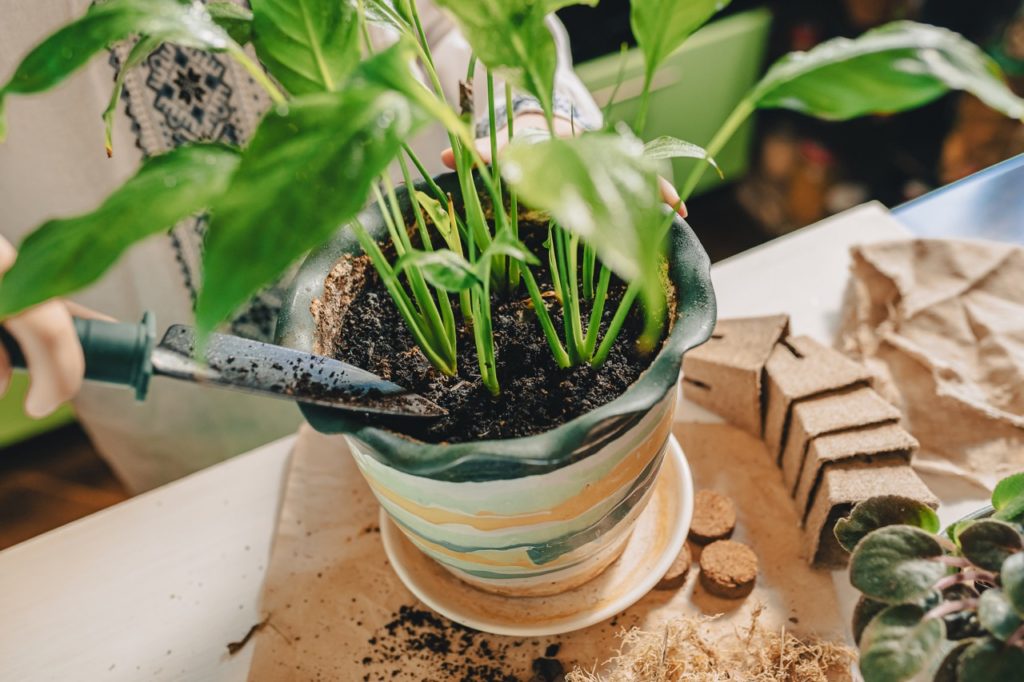
Fill two-thirds of the pot up with a suitable peat-free growing medium, which is moist yet free-draining.
Then. put your peace lily into the new pot and fill around the root ball with the growing medium.
Water well, making sure that excess water is allowed to drain away.
Ongoing Plant Care
Peace lilies really are incredibly easy to care for.
Their care simply involves making sure that you meet the basic requirements for water and nutrition, and get the environmental conditions right in the first place.
If you do these things then you are not that likely to encounter many problems.
Watering
It is important to water regularly, and you should aim to never allow the potting mix to dry out entirely, but you should also make sure that the medium does not become waterlogged, as this can also cause issues.
As a general rule, you should water well, letting the water drain away freely, then water again only once the top few centimetres of the potting medium is dry.
Try to use rainwater if possible as the chlorine in tap water can cause issues.
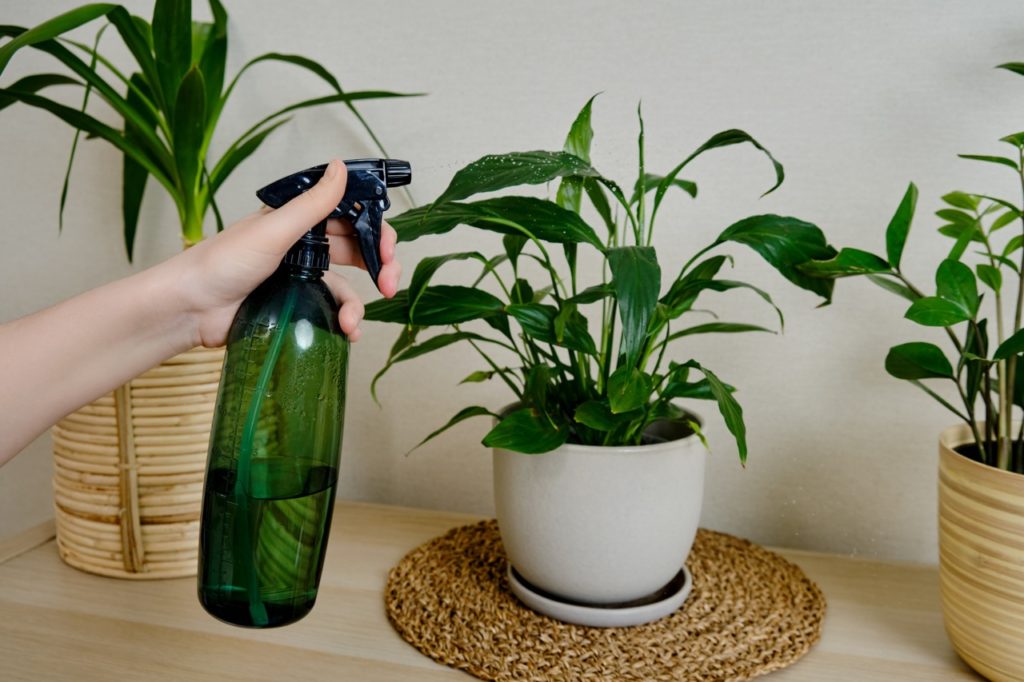
Peace lilies are rather more sensitive to chlorine than other plants, so if you are experiencing problems when using tap water, but cannot use rainwater, then it may be wise to distil the water before use.
Putting a finger into the potting mix up to the knuckle to see whether it is dry should help you determine when more water is required.
Luckily, peace lilies will soon tell you if they are not getting enough water, since they will wilt when they are thirsty.
If your room is rather dry, then you may also need to mist your plant every now and then to raise humidity.
Soil Requirements
Peace lilies will do best in a multipurpose peat-free potting compost, or a potting mix which has been formulated for potted houseplants.
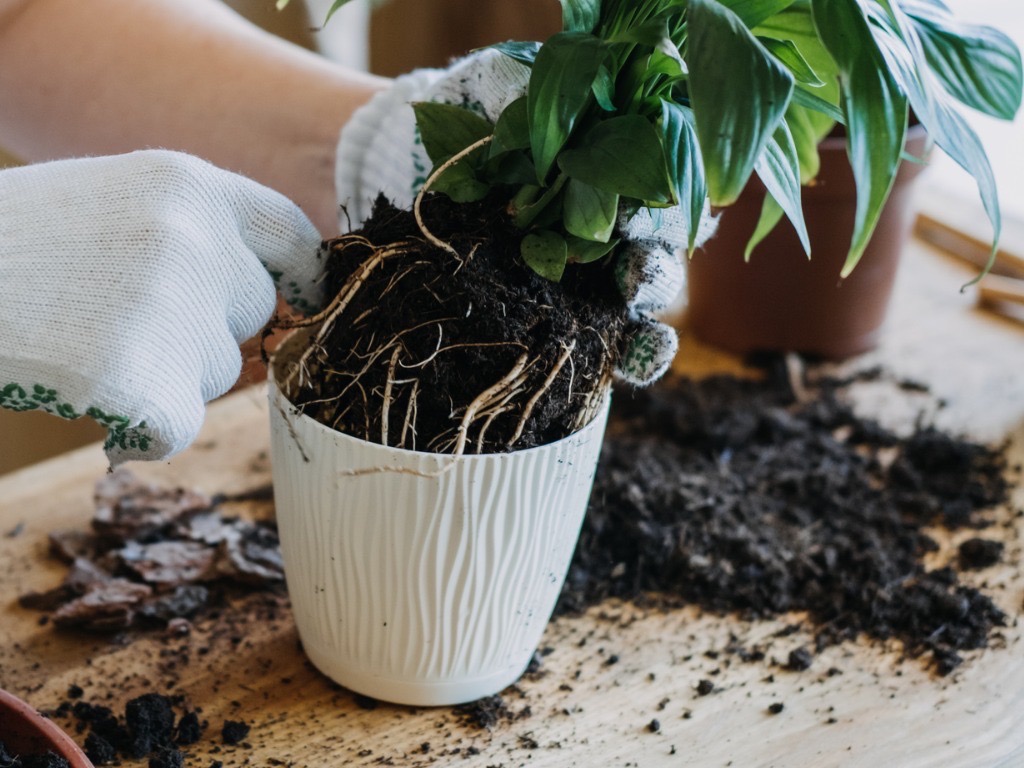
As mentioned above, the mix should be moist yet free-draining.
Feeding
While you do not necessarily have to worry too much about this, it can be beneficial to feed your peace lily with an organic liquid plant feed (such as compost tea) every couple of weeks in the spring and summer months.
Light Requirements
Remember, peace lilies like partial shade, preferring to be in a bright spot but out of direct sunlight.
So, be sure not to place them where the sunlight is too intense or this can cause brown patches or streaks on the leaves.
“As the best spot for a Spathiphyllum is out of direct sunlight, it is a good idea to remove dust from the leaves regularly with a plant wipe or clean damp cloth to aid optimal photosynthesis,” shares Master Horticulturist Dan Ori.
Repotting
Peace lilies do prefer to have their roots somewhat constricted, so it is not a good idea to increase pot size too much.
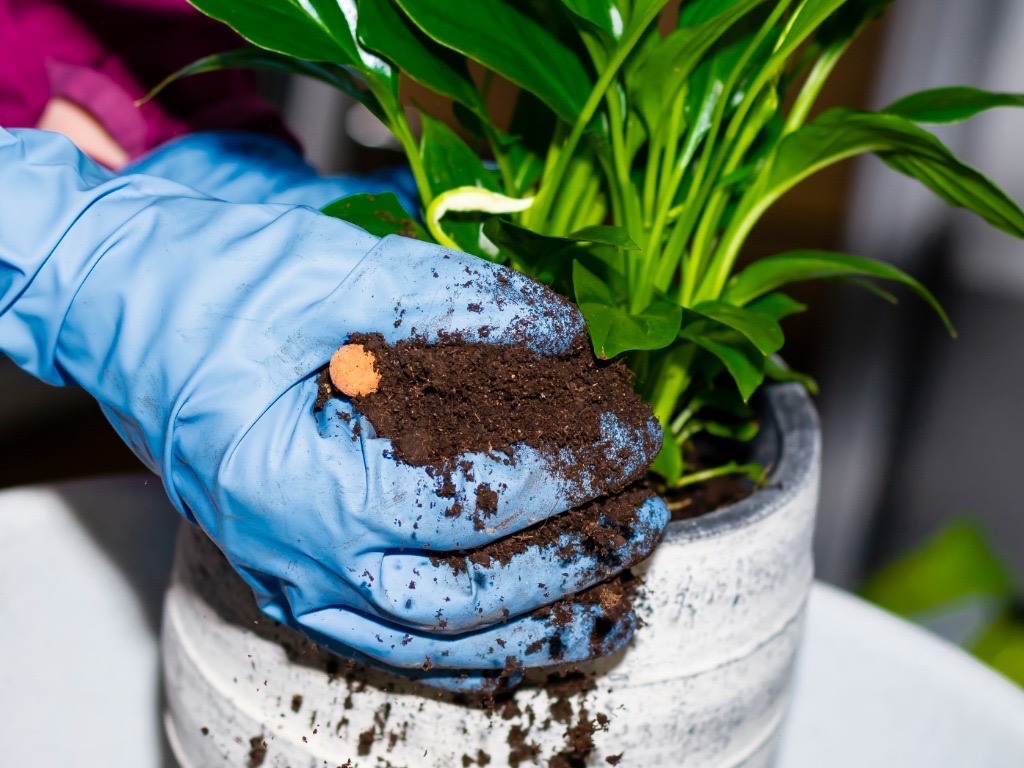
Usually, however, you should repot your peace lily into a slightly larger pot every 2-3 years.
If your plant keeps wilting even though it has been watered, this can be a sign that the plant has outgrown its situation and repotting is required.
Flowering
One common issue that those with a new peace lily often face is the plant not flowering.
There is a range of reasons why a peace lily may not have flowered, mostly relating to its happiness in the environmental conditions you have provided.
Unfortunately, if your plants are otherwise happy, getting peace lilies to flower again might just be a waiting game, as your plants might not actually be at their mature flowering stage just yet.
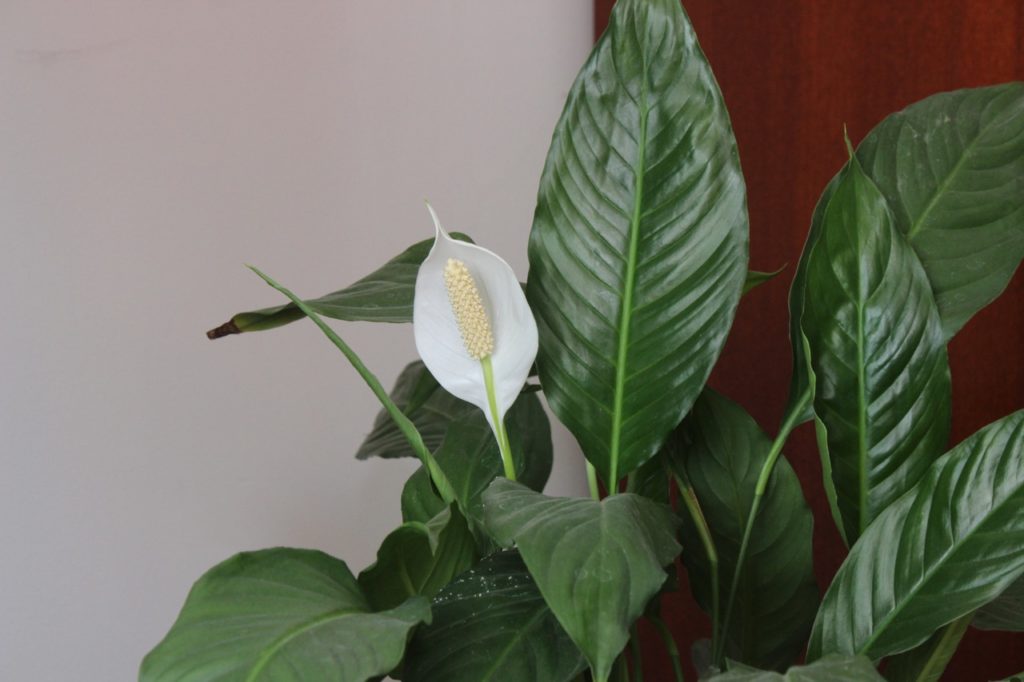
They may have been forced to flower prematurely by those selling them, through the use of gibberellic acid.2Henny, R., & Chen, J. (2016). Spathiphyllum Flowering—Keys to the Future. University of Florida. Retrieved March 24, 2023, from https://edis.ifas.ufl.edu/publication/EP320
This is not a recommended approach, and you should not attempt it.
Simply make sure all the plant’s needs are perfectly met and wait until the plant actually does reach maturity and flower.
Pruning
Peace lilies do not need pruning, but it is natural for some yellow leaves to form, and these can be removed to make room for new growth.
Common Pests
Peace lilies are not prone to pests or diseases, and when problems arise, they are almost always associated with environmental conditions.
However, you may see small flies around the potting mix, and these are likely to be fungus gnats, which thrive in damp potting mix.
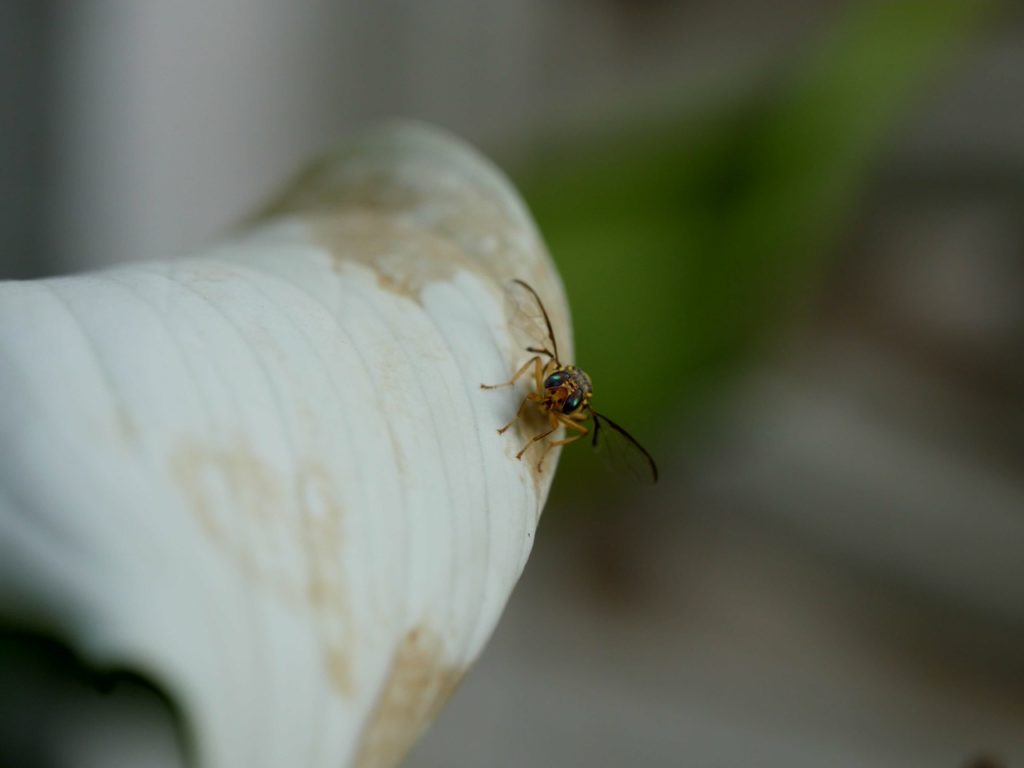
Watering less can sometimes help to disrupt their life cycle, or you can trap adults with beer traps or similar.
Organic pesticides can be used in cases of extreme infestation but should only ever be a last resort.
Biological controls are also available.
References
- 1June 2015: the Peace Lily is Houseplant of the month. (2015, July 3). Flower Council. Retrieved March 24, 2023, from https://www.flowercouncil.co.uk/campaign/june-2015-the-peace-lily-is-houseplant-of-the-month
- 2Henny, R., & Chen, J. (2016). Spathiphyllum Flowering—Keys to the Future. University of Florida. Retrieved March 24, 2023, from https://edis.ifas.ufl.edu/publication/EP320
